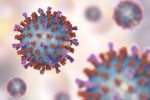Case Highlights Importance of Distinguishing Types of Angioedema
Steroids are usually not needed for non-episodic angioedema with eosinophilia

Swelling in the hands and feet, as well as elevated blood levels of eosinophils — a type of immune cell — led clinicians to diagnose a Japanese woman with non-episodic angioedema associated with eosinophilia (NEAE), as described in a case report.
Distinguishing NEAE from similar conditions is important, the researchers noted, since it usually resolves on its own and potentially harmful steroid therapies can often be avoided.
The case report, “Non-episodic angioedema associated with eosinophilia,” was published in the journal BMJ Case Reports.
NEAE is a subtype of angioedema associated with elevations in the levels of eosinophils — a type of infection-fighting white blood cell. It is characterized by episodes of swelling, fever, and weight gain. Although the cause of NEAE remains unknown, the condition is thought to arise from an aberrant immune response to an external factor, such as an infection.
While its true prevalence has not been determined, at least 100 cases have been reported, mostly in women from Japan, Korea, and Thailand, according to researchers.
This case report concerns a Japanese woman in her 30s who reported to the researchers’ clinic with progressive swelling, or edema, in the hands and feet that had begun a week before.
The woman reported she had difficulty clenching her fists and was unable to wear a wristwatch or shoes due to swelling. She also said she was experiencing sudden bouts of hives, called urticaria, on the palms of her hands and on the soles of her feet, and that she had mild weight gain.
She had no family history of hereditary angioedema or other allergic diseases, and was not taking any medications.
A physical examination confirmed the presence of swelling in the hands and legs, which was non-pitting, meaning it did not indent in response to pressure. No skin rash was observed.
Blood tests revealed the woman had an elevated white blood cell count. Nearly half of all white blood cells (47%) were eosinophils. Most other laboratory tests were normal.
Based on these findings, she was diagnosed with NEAE. Her symptoms spontaneously eased without treatment. Swelling almost completely resolved after two weeks. Her eosinophil levels normalized after another six weeks.
Several characteristics distinguish NEAE, making it possible to clinically diagnose the condition, according to the researchers. Non-pitting edema occurring only in the extremities, as well as severe elevations in eosinophils, despite generally good health, are considered hallmark signs.
The researchers noted, however, that the condition is similar to another type of angioedema called episodic angioedema with eosinophilia (EAE), but there is a critical difference between the two, making the correct diagnosis particularly important.
“While EAE frequently recurs and usually requires steroid therapy, patients with NEAE usually experience only a single episode, which frequently remits spontaneously within a few weeks to months without specific therapy,” the researchers wrote, noting that in severe cases, patients may require low-dose steroids or antihistamines.
About 70% of reported NEAE cases occurred in the autumn, which may also be a diagnostic clue, although the potential significance remains unknown.








